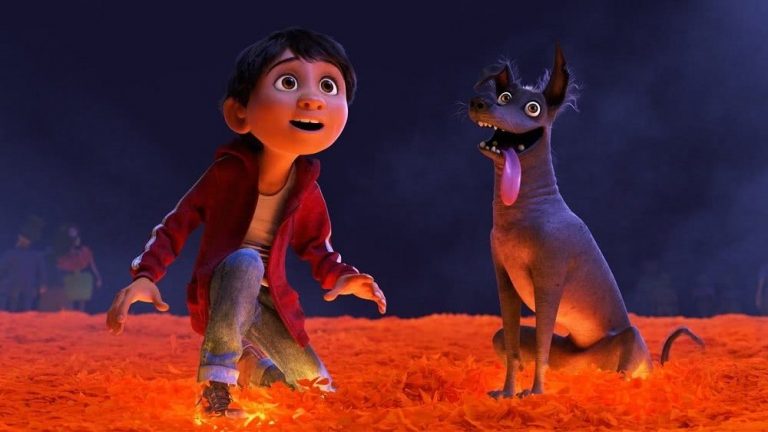At first glance, you could be forgiven for being sceptical about Pixar’s latest offering, Coco. A large, U.S.-based studio taking on a film centred around the language, music and traditions of Mexico was always going to run the risk of exploiting the culture for cheap laughs – or perhaps misunderstanding it altogether. But rather than presenting a glossy, inaccurate version of Mexico’s Day of the Dead traditions, Coco uses the story of a young boy named Miguel with big dreams to open up a whole new world for audiences young and old.
Coco is the tale of 12-year-old Miguel, who lives with his family in a small town in Mexico and dreams of becoming a musician like his idol, Ernesto de La Cruz. However, music has been forbidden in his family since his great-great grandfather abandoned his roots for the life of a touring musician. It’s only on Dia de Muertos, when many Mexicans celebrate the opening of the bridge between the afterlife and the land of the living by making offerings to their deceased family members, that Miguel makes a discovery which leads him into the land of the dead itself in search of his great-great grandfather.
Director Lee Unkrich, who does not have Mexican heritage, has spoken extensively about the multiple false starts and wrong turns throughout the six-year gestation period behind Coco, and the work of his team of cultural consultants that influenced the direction of the story. Indeed, screenwriter Adrian Molina, who grew up in the States with his Mexican family, earned a co-director credit midway through production for his contributions.
The most significant change to Coco was came through realisation that, in contrast with Western traditions, Mexico’s Dia de Muertos celebration stems from an attitude of holding on to the past and loved ones who have died, rather than letting them go. This essential difference drives the plot and characterisation of the film, as Miguel eventually learns the importance of remembering his family and honouring his roots.
In a time when Latinos are facing increased hostility from the Trump administration , a film like Coco is a hugely welcome surprise.
Music plays a huge role in the joy that is Coco, and the song ‘Remember Me’ recurs throughout the movie to great effect. Newcomer Anthony Gonzalez’s performance as Miguel makes it clear he has all the hallmarks of a star in the making, appearing as he does alongside stars like Gael Garcia Bernal and Benjamin Bratt. Like in Mexico, music is ever-present and passionate in Coco. To quote Ernesto De La Cruz: “The music is not just in me… It is me.”
In another example of authentic inclusion, the deliberate use of the Spanish language in a big budget animation like Coco is groundbreaking. For example, at one point Miguel uses the phrase “No manches!” to express disbelief, a phrase that is idiomatic in Mexico. And although English-speaking audiences may not know the exactly translation, we can intuit just what he means.
The specific animation style of Coco was also inspired by the production team’s trips to Mexico. The bright colours and friendly skeletons that populate the film are an achievement in and of themselves, but the rendering of the Land of the Dead, which recalls colourful, rambling, colonial cities in Mexico like Guanajuato, is the film’s most memorable creation.
In a time when Latinos in the U.S. are facing increased hostility from the Trump administration and its supporters, a film like Coco is a hugely welcome surprise. When the film was released in Mexico just before Dia de Muertos, it quickly became the highest-grossing blockbuster in the country’s history. (The previous record holder was The Avengers.) Of course, one great movie can’t combat generations of racism and oppression. But representation matters, and Coco represents what we can only hope is the beginning of a new, more collaborative and inclusive era of mainstream animated films.
Coco is in cinemas now. For another review of a sleeper Disney hit, check out our verdict of Star Wars: The Last Jedi, here.


































